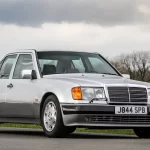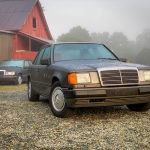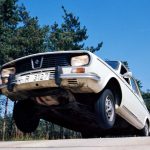This story first appeared in the US in the September/October 2024 issue of Hagerty Drivers Club magazine.
General Omar Bradley’s 1951 memoir of World War Two sat unread on my shelf until I grabbed it at the last minute on our way out the door to attend the 80th anniversary of D-Day. On the flight over, I became engrossed; the book is rich with anecdotes and private conversations between Bradley, Eisenhower, Churchill, Montgomery, and other figures so significant in shaping world history. One favorite story: A few months before the invasion, Bradley – who commanded the American forces landing on the Omaha and Utah Beaches – was huddled with his planners, wondering aloud if a stream in one of the gullies leading off Omaha had made the soil too silty to run trucks over. A few days later, a British lieutenant turned up with a glass tube bearing a soil sample. Unbeknownst to Bradley, the lieutenant had ridden a submarine through the minefields, paddled ashore in a rubber raft in the darkness, and, under the noses of the German gunners, dug up the sample. The real James Bond.

A few days after arriving in France, we drove a 1943 Dodge WC-52 weapons carrier down that same gully and over those same sands, which can still support a 6000-pound truck carrying seven wide-eyed tourists from Los Angeles. It was our fourth trip to Normandy, and as in past years, we came in a period vehicle to be part of the show. Because Normandy at anniversary time is as much a car and motorcycle (and tank and jeep and half-track) show as it is a somber remembrance.
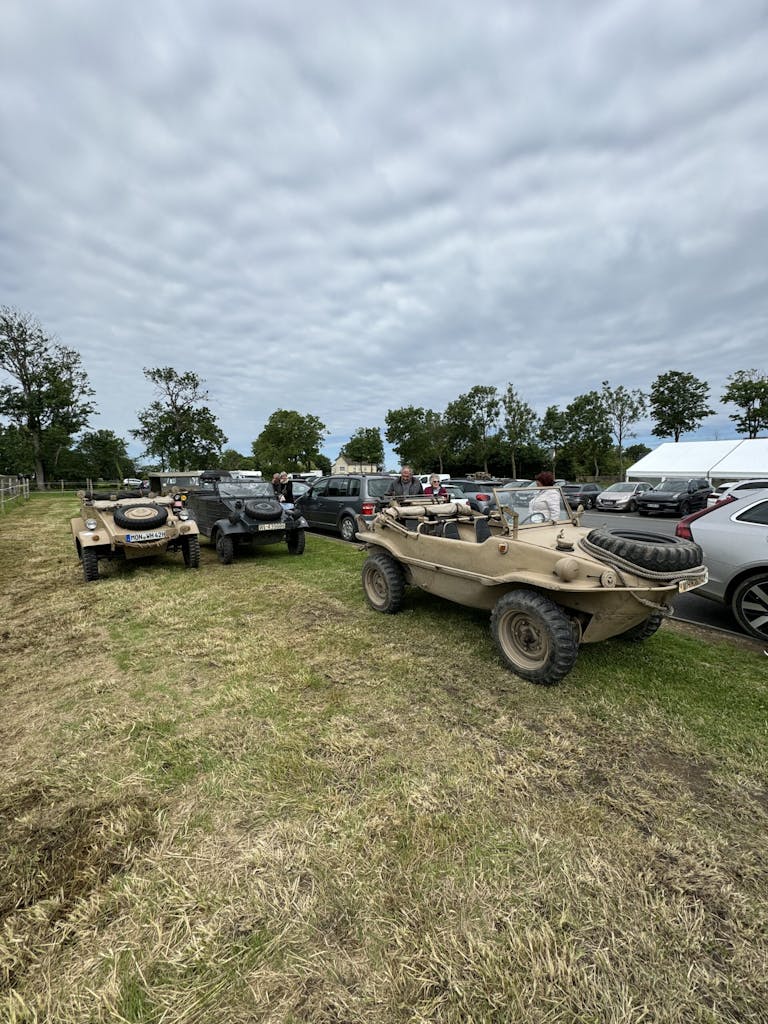
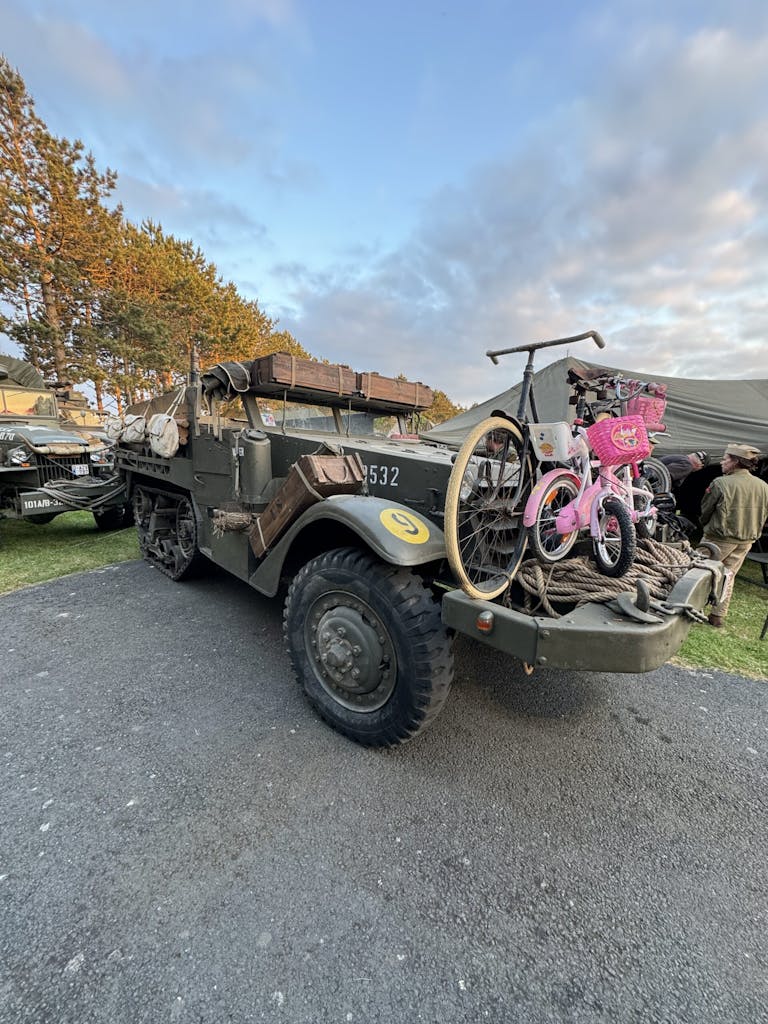
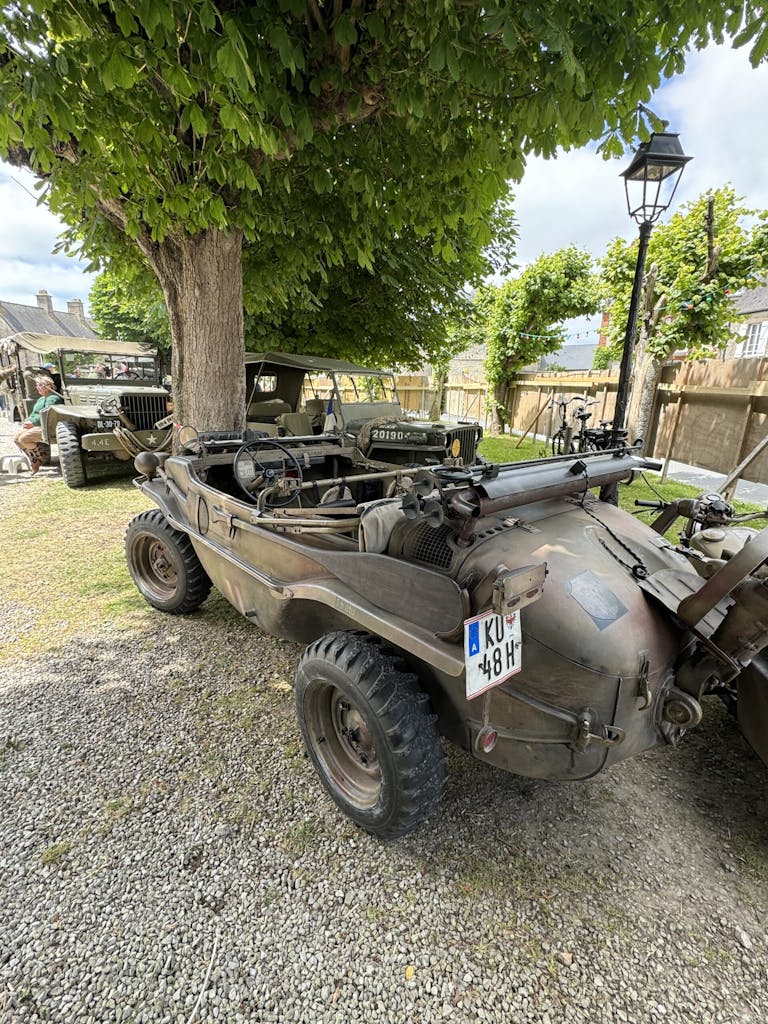
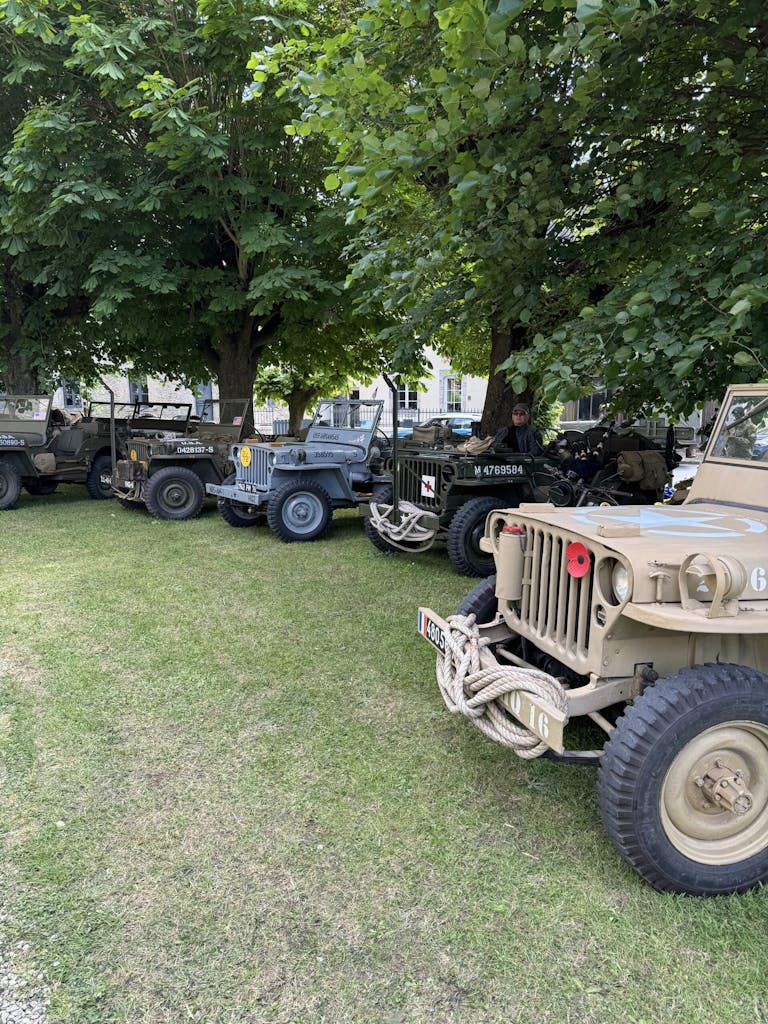
In fact, it seems to be growing into one of the largest vintage vehicle events in the world – certainly the biggest in which all the vehicles are painted more or less the same color. The British Military Vehicle Trust, just one of the many clubs that organize a run, said its members brought 345 vehicles and that it was the strongest turnout in the club’s 56-year history. I guessed that at least 5000 war-era vehicles were crammed into every campsite, hotel lot, and chateau courtyard across the 75 miles of the invasion zone.
Our own 3/4-ton Dodge 4×4 with its anemic but unstoppable 230-cubic-inch (3.8L) flathead-six had shipped out from Detroit sometime in 1943 or ‘44. Its wartime exploits are lost to history, though it did acquire a bullet hole near the passenger seat somewhere along the line. Then it spent decades in the Norwegian Army. The Norwegians aren’t much for fighting, so the Dodge mostly sat with others like it in long, snow-covered barns, pampered by bored mechanics counting down the minutes until their national service was over.
Christened “Ernie’s Pile” after the great war correspondent Ernie Pyle, the Dodge trundled at 35–40mph, the crashbox four-speed requiring a swift and certain double-clutch technique that becomes an ingrained habit that is hard to break even after you return to the 21st century. It mostly ran reliably, though once while motoring through the British landing zones, it developed a bad ignition stumble. A new cap, rotor, points, and condenser only made it worse. It turned out the condenser was grounding on a metal cap in the distributor that prevents electromagnetic static from interfering with the radio sets once carried in the back.
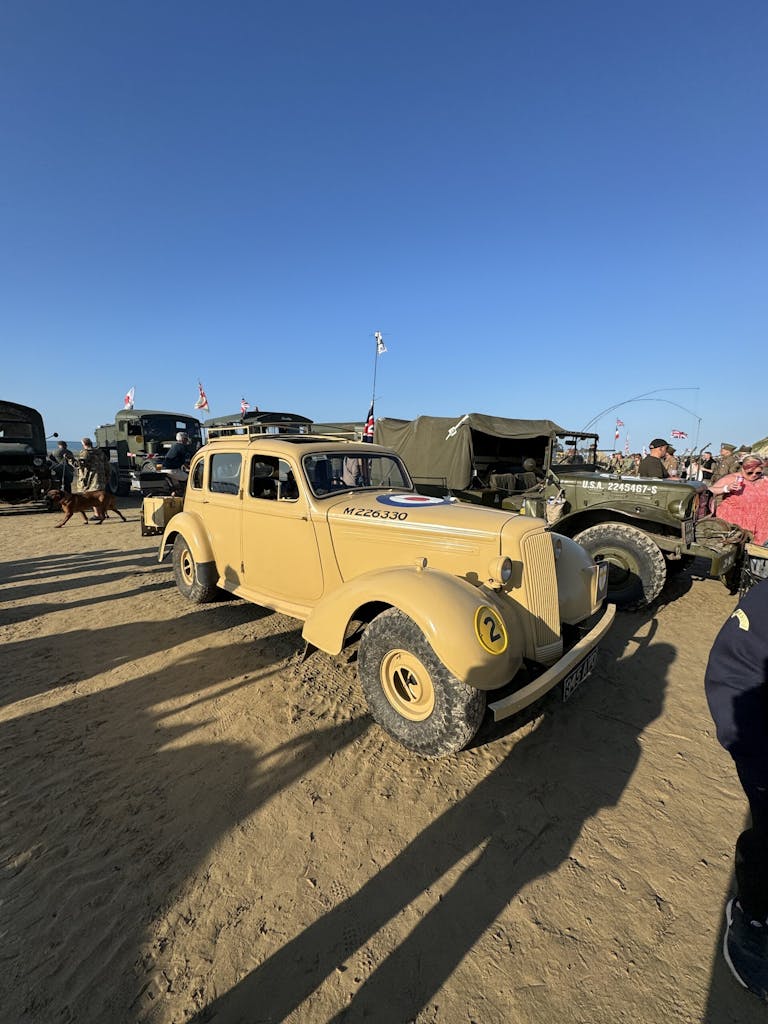
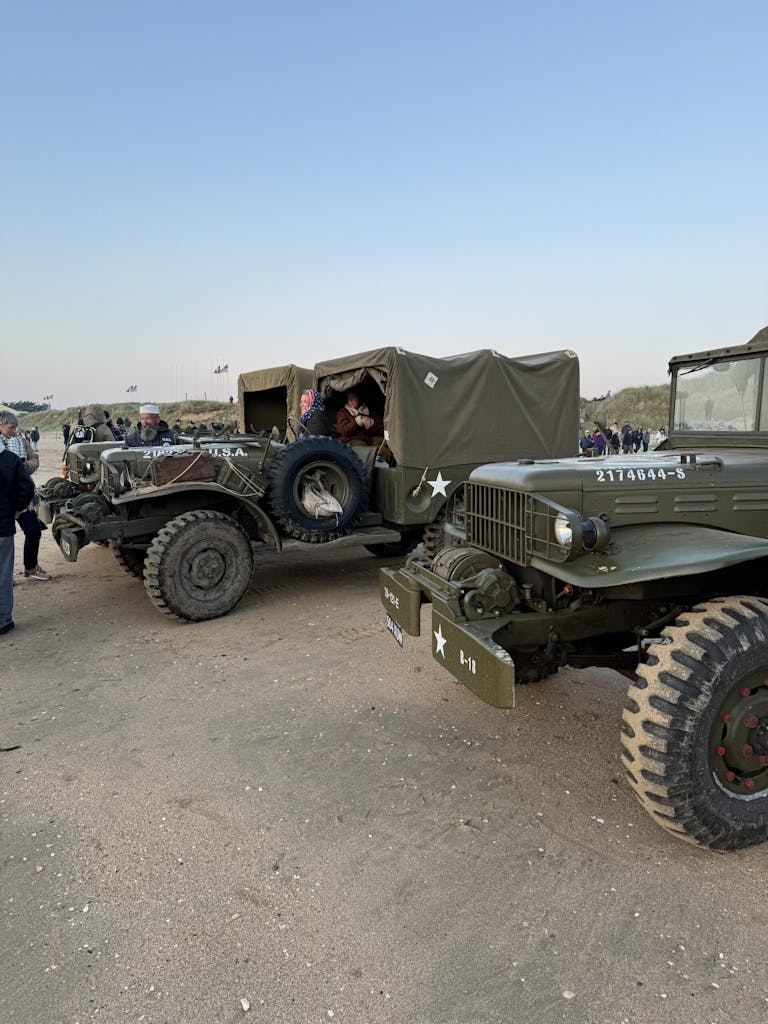
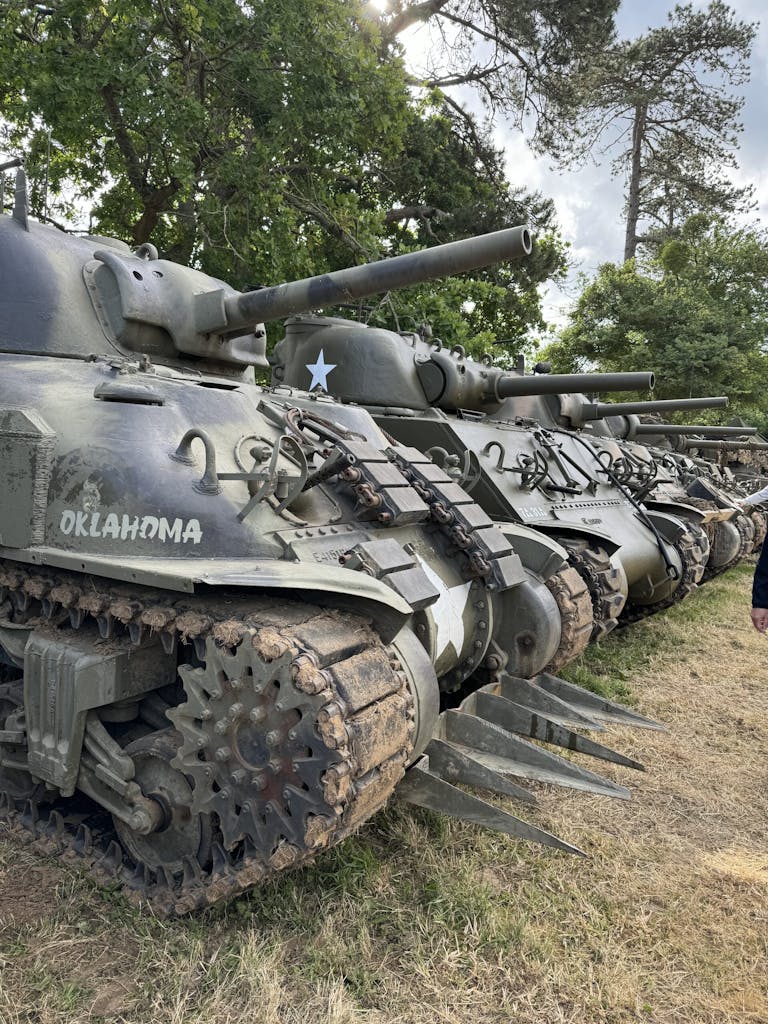
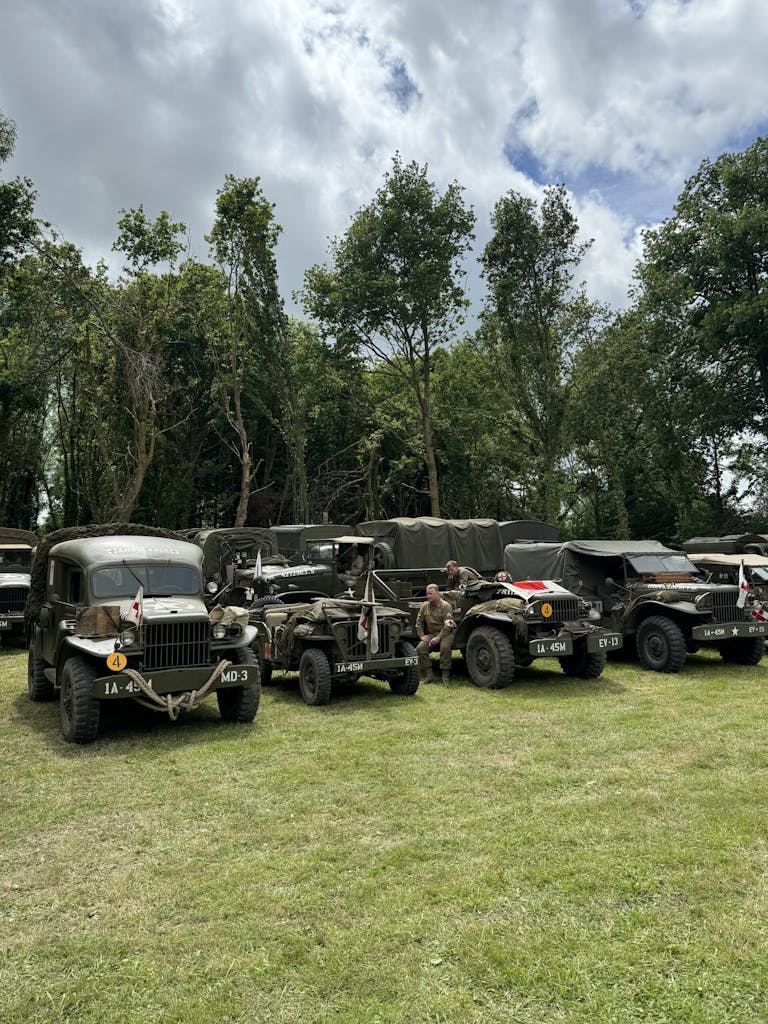
After that, the Dodge ran perfectly, carrying us to drop zones where parachutists under historically accurate round canopies jumped out of C-47s, in a miles-long parade with other military vehicles through the clogged streets of Sainte-Mère-Église, and to the shores of Fox Green, Dog White, Uncle Red, and the other tidal flats where it all happened on 6 June 1944.
Bradley observed in his book that war “makes a mockery of the thin veneer of civilization.” Some might think a massive car show and cosplay, with all the kiddie rides, concerts, fireworks, sausage tents, and beer kegs that go along with it, make a mockery of war. Especially at a time when real wars are making the veneer of civilization seem quite thin indeed. My own feeling (based partly on some conversations with Normandy vets) is that if the men who landed and died on these shattered beaches could see what future generations had made of that whole horrible, stinking, bloody, cataclysmic mess, they would be gratified that at least something good came of it. And that they have very much not been forgotten.


